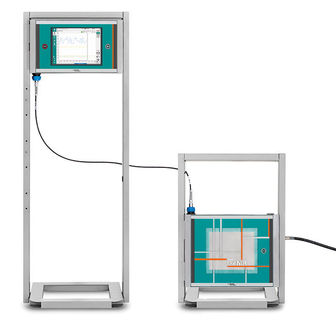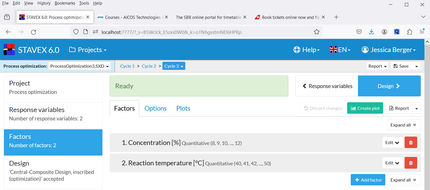To use all functions of this page, please activate cookies in your browser.
my.bionity.com
With an accout for my.bionity.com you can always see everything at a glance – and you can configure your own website and individual newsletter.
- My watch list
- My saved searches
- My saved topics
- My newsletter
Improvisation in music therapyIn music therapy improvisation is defined as a process whereby client and therapist relate to one another in which the client makes up music, musical improvisation, while singing or playing, extemporaneously creating a melody, rhythm, song, or instrumental piece. In clinical improvisation, client and therapist (or client and other clients) relate to one another through the music. Improvisation may occur individually, in a duet, or in a group. The client may use any musical or nonmusical medium within his or her capabilities. Musical media includes voice, body sound, percussion, and string, wind, and keyboard instruments. Nonmusical media can consist of images, titles, and stories. Product highlight
How improvisation fits into music therapyMusic therapy is a systematic process; it is not a series of random events. Systematic means that music therapy is "purposeful, organized, methodical, knowledge-based, and regulated" (Bruscia 1998). One of the most important features is its methodical processes. Methodical means that music therapy always proceeds in an orderly fashion. It involves three basic steps: assessment, treatment, and evaluation. Treatment is the part of a music therapy process in which the therapist engages the client in various musical experiences, employing specific methods and techniques. When planning treatment, the music therapist has to select the types of music and musical experiences that will be most relevant to the client. There are four basic types of musical experiences: listening, re-creating, composition, and improvisation. Characteristics of improvisation in music therapyImprovisation is a generative and creative process of musical intervention. It helps the client to explore aspects of self, in relation to others, in an appropriate way. Improvisation also generates new and individualized musical forms. Using musical improvisation in a therapeutic setting can increase independence. The interactive use of improvisation facilitates problem-solving, because it is flexible rather than predetermined. Getting the client involved in an improvisational activity can develop social skills and interaction. Improvisation exists in real time and can be effectively used with academic areas and other creative arts (Gardstrom 2001, 83). Clinical goals of improvisation experiencesAccording to Bruscia (1998), clinical goals that can be achieved through improvisation are as follows:
Improvisational methods and their variationsImprovisation can be carried out with both musical and nonmusical references. (Bruscia 1987, 10)
Basic therapeutic techniquesBruscia (1987) and Wigram (2004) introduced a variety of improvisational techniques and methods in their books. Among these, there are a few major therapeutic techniques for improvisation. Imitating is a basic technique of empathy in which the music therapist copies or repeats a client's response, after the response has been displayed. The music therapist focuses on any sound, rhythm, interval or even facial expression. Reflecting is a technique in which the music therapist expresses the same moods or feelings which have been presented by the client. Rhythmic grounding is implemented by establishing a steady beat or rhythm, supporting the client's improvisation. The use of a rhythmic ostinato is an example of rhythmic grounding. Dialoguing is a process in which the music therapist and the client communicate through their improvisations. Lastly, accompanying is a technique in which the music therapist supports the client's improvisation by giving an accompaniment that consists of rhythm, melody, and chord progressions. Integration of therapeutic methodsIt is important to have variety in music therapy sessions. Improvisation should be conducted using more than just one or two methods and techniques. It is also critical to maintain flexibility during the improvisation. For example, the music therapist can preserve a flexible session flow by incorporating several methods, such as imitating, accompanying, dialoguing, and rhythmic grounding. ReferencesBruscia, Kenneth E. 1987. Improvisational Models of Music Therapy. Springfielf,IL; Charles C. Thomas Publications. Bruscia, Kenneth E. 1998. Defining Music Therapy. Gilsum NH:Barcelona Publishers. Gardstrom, Susan C. 2001. Practical techniques for the development of complementary skills in musical improvisation. Music Therapy Perspectives 19, no.2: 82-7. Wigram, Tony. 2004. Improvisation: Methods and Techniques for Music Therapy Clinicians, Educators and Students. New York:Jessica Kingsley Publishers. External links
|
|||||||||||||||||
| This article is licensed under the GNU Free Documentation License. It uses material from the Wikipedia article "Improvisation_in_music_therapy". A list of authors is available in Wikipedia. |







